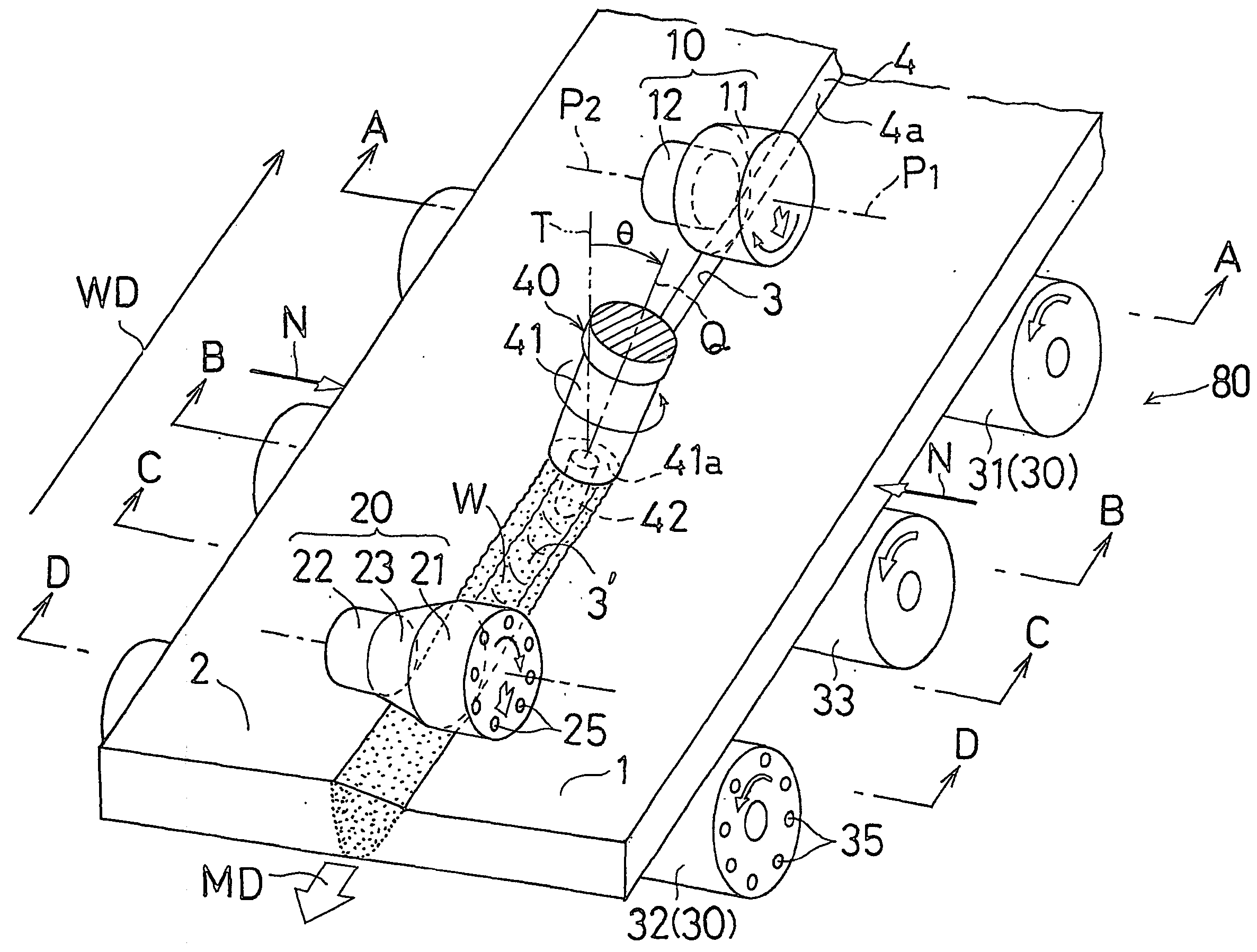Friction agitation joining method method for manufacturing joined butted members and friction agitation joining apparatus
a technology of friction agitation and joining method, which is applied in the direction of metal-working apparatus, welding apparatus, manufacturing tools, etc., can solve the problems of thermal distortion caused by joining, inability to obtain high-quality joined butted members, etc., to achieve the effect of preventing the generation of poor junctions, reducing the number of configuration defects, and suppressing the surface vibration of each joining member 1 and 2
- Summary
- Abstract
- Description
- Claims
- Application Information
AI Technical Summary
Benefits of technology
Problems solved by technology
Method used
Image
Examples
first embodiment
[0175] Next, concrete examples of the friction agitation joining method will be shown.
[0176] First, a long plate-shaped first joining member made of aluminum alloy (Materials: JIS A5052-0, Dimension: length 1000 mm.times.Width 100 mm.times.Thickness 2 mm) and a long plate-shaped second joining member made of aluminum alloy (Materials: JIS A5052-O, Dimension: length 1000 mm.times.Width 100 mm.times.Thickness 3 mm) were prepared.
[0177] As a joining tool 40, a tool having a rotor 41 with a probe 41a was prepared. The diameter D of the end face 41a of a rotor 41 was 9 mm, and the protrusion length of the probe 42 from the rotor end face 41a was 2.3 mm. The probe 42 had an M3 screw axial portion.
[0178] As forward pressing rollers 10, the rollers as shown in FIGS. 8A and 8B were prepared, while as backward pressing rollers 20, the rollers as shown in FIGS. 8C to 8E were prepared. The structure of each roller was as follows.
[0179] The forward pressing roller 10A shown in FIG. 8A is the sa...
example 1
[0184] The side edge of the first joining member 1 and that of the second joining member 2 were butted against each other with the lower surfaces thereof being flush with each other. Then, the butted portion 3 was joined along the entire length thereof by the joining method of the first embodiment. In this joining, the roller 10B shown in FIG. 8B was used as the forward pressing roller, and the roller 20D shown in FIG. 8D was used as the backward pressing roller. The joining was performed under the following conditions: the rotating speed of the rotor 41 of joining tool 40 was 1,000 rpm; the joining rate was 700 mm / min; the inclination angle .theta. of the rotation axis Q of the joining tool 40 toward the first joining member 1 was 5.degree..
example 2
[0185] The forward pressing roller 10B shown in FIG. 8B and the backward pressing roller 20C shown in FIG. 8C were used. The butted portion 3 of the joining members 1 and 2 was joined along the entire length thereof. Other joining conditions were the same as the aforementioned example 1.
PUM
| Property | Measurement | Unit |
|---|---|---|
| insertion depth | aaaaa | aaaaa |
| temperature | aaaaa | aaaaa |
| insertion depth | aaaaa | aaaaa |
Abstract
Description
Claims
Application Information
 Login to View More
Login to View More - R&D
- Intellectual Property
- Life Sciences
- Materials
- Tech Scout
- Unparalleled Data Quality
- Higher Quality Content
- 60% Fewer Hallucinations
Browse by: Latest US Patents, China's latest patents, Technical Efficacy Thesaurus, Application Domain, Technology Topic, Popular Technical Reports.
© 2025 PatSnap. All rights reserved.Legal|Privacy policy|Modern Slavery Act Transparency Statement|Sitemap|About US| Contact US: help@patsnap.com



